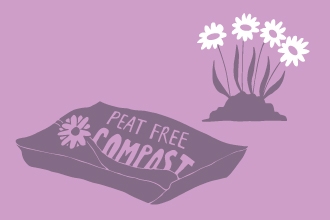As non-native trees, you're more likely to find these childhood favourites in a historic parkland than you are on a nature reserve. That's not to take anything away from these majestic trees, however, as their flowers are loved by pollinators, their nuts by small mammals and they have a number of uses for humans too.
Conker time
Conkers and horse chestnut tree by Wendy Carter

Conkers by Steve Bloomfield
I loved playing conkers at school. I was distracted all day with that feeling of waiting for the bell to ring so that I could be the first one out of class to scrump the best conkers for the next day’s competition. I'm just the same now. I have a favourite conker collecting location; I can't tell you where in case you get there before me. These days, though, it's more about the delight of finding newly opened conker shells and holding the silky-fresh conker in my hand, rolling it over and over. I collect a few to take home and admire, leaving the majority for wildlife to eat and for the young and young-at-heart to collect, just like I do.
It never occurred to me that horse chestnut trees hadn’t always featured in our landscape until I worked in a historic landscape and on a project about plant hunting. They were common where I grew up but, thinking back, I'd find them in churchyards, parks, planted around Victorian reservoirs and in the grounds of large houses - all in places known for more ornamental plantings.

Horse chestnut candles by Wendy Carter
They were introduced to England from Turkey in the 16th century and are now a familiar part of our natural world, probably thanks to generations of children playing conkers. In spring the candle-like spire of white or red flowers, a source of food for early insects, are held proud above the fresh green leaves.
Their leaves are unmistakeable ‘hands’ of five to seven drooping elongated ovals. However, it’s their fruits that we’re most familiar with – chestnut-coloured, large, silky smooth nuts enrobed in spiky green cases that fall to the ground with or without the help of keen conker players. Our wildlife doesn’t rely on conkers for food in quite the same way they do on the fruits, seeds and nuts of native trees so we’re not stealing their winter larder by playing.

Horse chestnut leaf miner by Wendy Carter
Our non-native horse chestnuts have been hit by a non-native moth. You might notice that their leaves shrivel much earlier in the year than they used to. In part this is due to annual variations in the weather but the moths also have a part to play. The moths were discovered in 1985 in Macedonia and have since spread across Europe, arriving here in 2002. These tiny lepidopterans emerge in April and May when they lay eggs on horse chestnut leaves; their caterpillars mine the leaves, burrowing into and then living between the upper and lower surfaces. Amazingly, these moths can have up to three generations each summer (the final generation spend the winter amongst the leaf litter). If you’ve noticed leaves with brown patches on them during summer, this is what you’ve been seeing; trees that have been badly affected may even have lost all their leaves already.

Person and dog made from conkers by Wendy Carter
When the moths arrived, there was a mild panic that we’d lose all our horse chestnuts. Most trees, however, seem able to cope with a breakout of moths and their munching larvae. It does, however, mean that the falling conkers are often smaller than we've been used to as they haven’t had quite as long to develop. Perhaps, then, they’re better used for creativity – I've been known to make conker people and dogs for a friend’s children.
Not had enough of these autumnal favourites? Ben brings you more...




